Bihar, a state in northeastern India, is home to the historic city of Rajgir. It is renowned for its holy places and is surrounded by hills. In the middle of the city still lie remnants of the Cyclopean Wall that formerly encompassed it. A Buddha-built monastery was previously located in the nearby Venu Vana park. The Japanese temple is home to a large Buddha statue with a shield-like shape. There are nearby hot springs that are reputed to have healing properties.
The ancient kingdom of Magadha, the state capital of the mighty Mauryan monarchs, had Rajgir as its initial capital. Lord Mahavira and Gautam Buddha were once thought to have preferred Rajgir as one of the spiritually significant places.
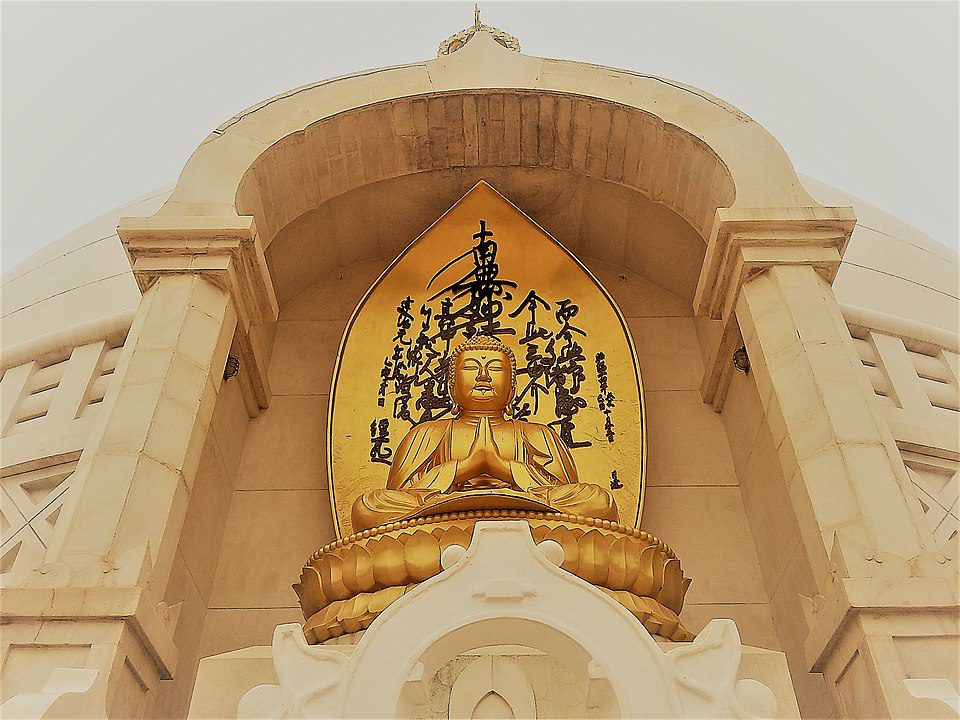
About Rajgir
Locally known as Brahmakund, there are hot springs in Rajgir. Hindus revere this location as the meeting point of the water from seven separate springs (Saptarshi).
Rajgir, often known as “The City of Kings,” is a historic settlement in the Indian state of Bihar’s Nalanda region. The city occupies a prominent position in Hindu, Buddhist, and Jain scriptures as the former seat and capital of the Haryanka, Pradyota, Brihadratha, and Mauryan Empires as well as the residence of historical personalities like The Buddha and The Mahavira.
The Mahabharata, India’s great literary epic, contains a mention of it by its monarch Jarasandha.. Despite the discovery of pottery dating to approximately 1000 BC in the city, it is uncertain when the settlement first existed. Additionally, this area is home to the 2,500-year-old Cyclopean Wall.
Jainism and Buddhism are also famous in this town.
In the sixth and fifth centuries BC, Mahavira and Buddha both gave lectures in Rajgir. The monarch Bimbisara even promised the Buddha a woodland monastery. Rajgir became one of the Buddha’s most significant preaching places as a result.
The current Nalanda University, which opened in 2010 and is located adjacent to the historic Nalanda University, was inspired by that institution, which is located in Rajgir. In addition, the town is well-known for its imposing hills, which dominate the landscape, and natural springs.
History of Rajgir

At Gridhra-kuta, also known as the “Hill of the Vultures,” Gautama Buddha spent several months practicing meditation and giving sermons. In addition, he spoke several of his well-known sermons and converted others to Buddhism, including king Bimbisara of Magadha. This is where Buddha gave his renowned Atanatiya Sutra. On one of the hills is the Saptaparni Cave, where Maha Kassapa presided over the First Buddhist Council.
It has connections to historical figures like Buddha, Arihant ShramanBhagawan Mahavira, and the creators of both Jainism and Buddhism.
It served as the ancient Magadha rulers’ capital city until Udayin (460–440 BC), son of Ajatashatru, transferred the capital to Pataliputra in the fifth century BC (modern Patna). Shishunaga (413-395 BC) founded the Shishunaga dynasty in 413 BC, choosing Rajgir as its initial capital before moving it to Pataliputra.
The 20th Jain Tirthankar Munisuvrata was born there, and it has close ties to Mahavira and Gautama Buddha.
Why visit Rajgir?
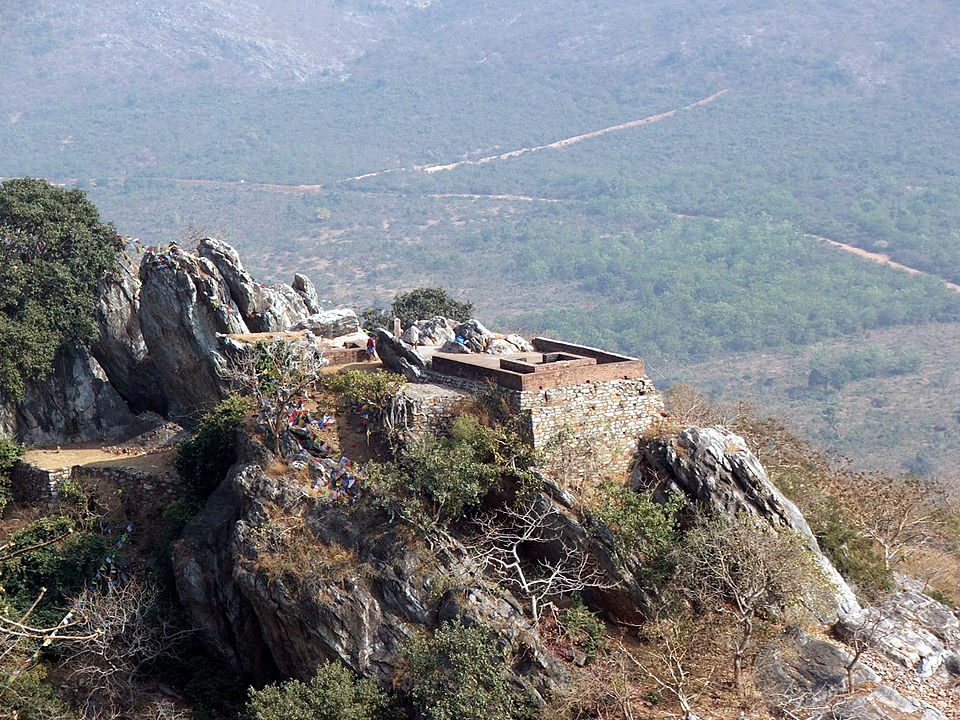
Despite its tiny size, Rajgir is a significant place of pilgrimage for the three major Indian faiths of Hinduism, Buddhism, and Jainism.
The Saptkarni caves on Vaibhava hill served as the location of the first Buddhist Council. Hindus both dread and benefit from the hot sulphur springs of Rajgir, which are also located in the Saptkarni cave.
A stairway ascends to the different temples at the base of Vaibhava Hill. Water is dispensed from spouts through the Saptadhara, or seven streams, which are thought to have their origins in the hills below the Saptkarni Caves. Men and women have their own designated areas for bathing.
The Brahmakund spring, which has a temperature of 45 °C, is the hottest of the springs.
The Buddha activated his second Wheel of Law atop the Griddhakuta or Vultures Peak and taught his students about it for three months each year during the rainy season. The Shanti (peace) stupa, a huge contemporary structure built by the Japanese Buddha Sangh, is perched atop the hill. A bridle trail leads to the top, but the aerial chairlift is far more thrilling.
The sixth-century BC Ajatshatru’s Fort is around six kilometers from the Rajgir railway station. It was the fort. Here is where Bimbisara’s imprisonment is also located, where tradition has it Ajatshatru locked him up.
Natural forces on Vaibhava Hill shaped a rectangular stone that appears to have served as a watchtower over the hot springs. After the name of King Jarasandha, a contemporary of Lord Krishna mentioned in the epic Mahabharat, it eventually turned into a hermit’s retreat and is now more often referred to as Jarasandha Ki Baithak.
About six kilometers separate the railway station from the Swarna Gufa. There may still be a gold treasure house here, according to legend.
Fair & Festivals
The annual Rajgir Mahotsav takes place from October 24 to 26. This event will feature classical dance, folk dance, music, and art acts.
Every three years, Rajgir celebrates the Malamasa Mela, which is marked with a sizable fair. Every third year, known as Malamasa in the Indian solar calendar, has 13 months.
The Makar Sankranti Mela, which takes place in mid-January on the last day of the lunar month of Paus, is another celebration unique to Rajgir. At the hot springs, devotees bathe in the sacred water and present flowers to the gods of the temples.
Things to Do in Rajgir
1. Glass Skywalk:

It is the most famous activity of Rajgir and attracts many tourists towards this place. As the name state, you would be able to walk on a glass height of 85 feet long and 6 feet broad, the glass floor bridge. The bridge can accommodate up to 40 passengers and is 400 feet above the earth. It is as thrilling as it is another adventure sport to do.
The price is 125/- per person and is open every day except Monday, from 9:00 am to 5:00 pm.
2. Suspension Bridge:

A suspension bridge has been built here on the lines of Clifton in England. It connects the two mountain ranges of Vaibhargiri included including the five hills of Rajgir. 135 m long and 6 feet wide, this is the first tourist suspension bridge in the state. About 50 lakhs have been spent on this.
The most important thing is that it has been built by local artisans and laborers only.
The price is 10/- per person and is open every day except Monday, from 9:00 am to 5:00 pm.
3. Zipline/ Flying Fox:
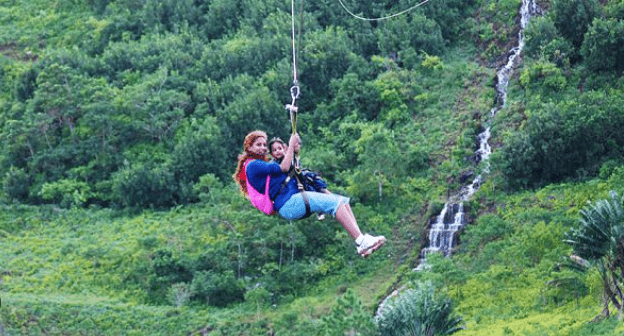
A rope connection between two points at different heights to cross gorges and rivers is called a zipline, also known as a flying fox or fun line. And the length of the Zipline is 300m in Rajgir, for a thrilling adventure.
The price is 100/- per person and is open every day except Monday, from 9:00 am to 5:00 pm
4. Zip / Sky Biking:
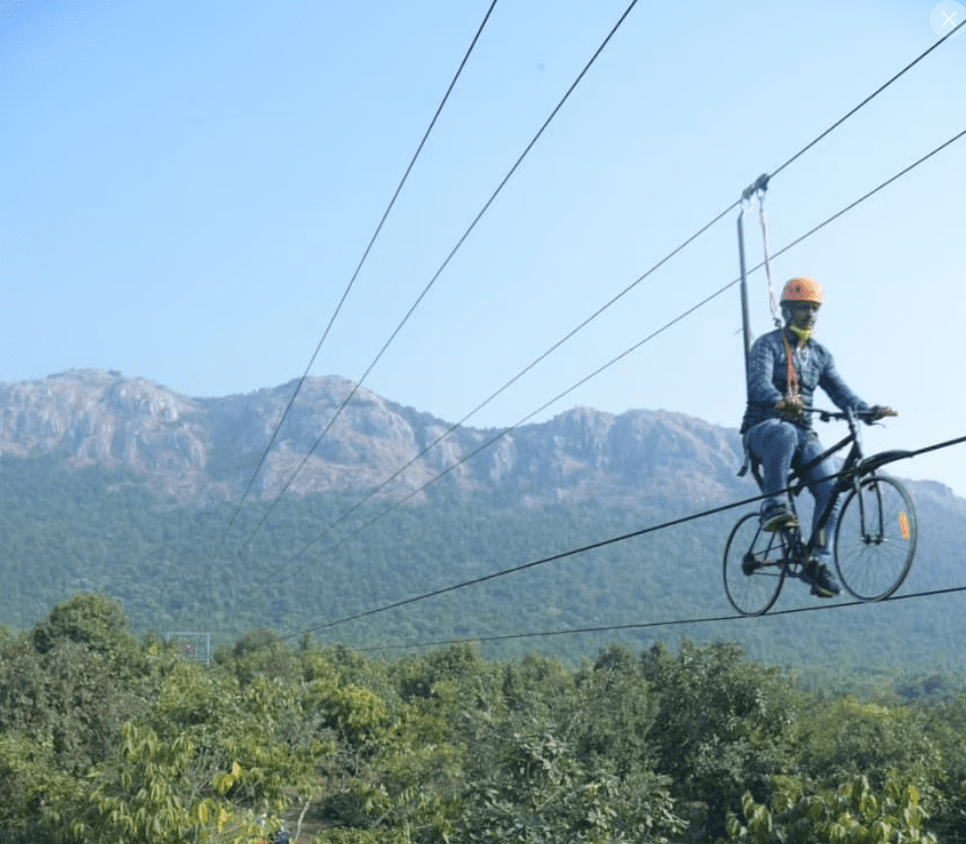
You may have heard of sky bikes and are wondering exactly what they are. A simple explanation would be a bike attached to a zipline. And the price of Sky biking in Rajgir is Rs. 100/- which in comparison to other places is very convenient.
The price is 100/- per person and is open every day except Monday, from 9:00 am to 5:00 pm
And there is more activity to do in Nature Safari of Rajgir in a very convenient way:
Rifle Shooting:
The price is 50/- per person and is open every day except Monday, from 9:00 am to 5:00 pm
Wall Climbing:
The price is 20/- per person and is open every day except Monday, from 9:00 am to 5:00 pm
Archery:
The price is 100/- per person and is open every day except Monday, from 9:00 am to 5:00 pm
Battery Vehicle:
The price is 10/- per person and is open every day except Monday, from 9:00 am to 5:00 pm
Bamboo/ Wooden/Mud Hut:
The price is 500/- per person and is open every day except Monday, from 9:00 am to 5:00 pm
Cycle Use:
The price is 10/- per person and is open every day except Monday, from 9:00 am to 5:00 pm
Places Around Rajgir
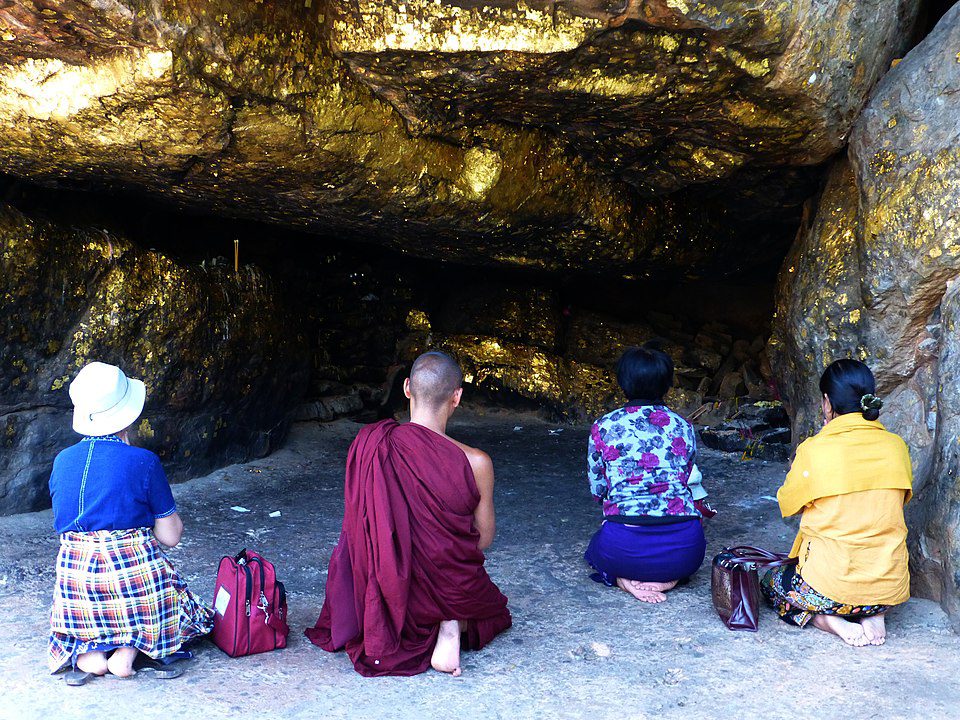
The location of Buddha’s enlightenment, Bodh Gaya, is approximately 34 km from Rajgir and is accessible by a decent road system. The Maha Bodhi Temple, where Buddha attained enlightenment under a pipal tree, and the monasteries constructed by many Buddhist nations are the main tourist attractions in this area.
It was converted into a university in the fifth century AD, and for more than 700 years, it remained the primary academic center..
According to legend, Lord Mahavira passed away 35 miles away in Pawapuri.
The ancient capital of Bihar, Patna, is around 60 km northeast of Rajgir.
Best Time to Visit
Like other areas of the Gangetic plains, Rajgir has a harsh climate. In the hot and muggy summer months from April to July, the average temperature can reach around 45°C and the relative humidity can get to over 80%. The average nighttime temperature throughout the winter is just about 10°C. The typical temperature is around 20°C. This region experiences the monsoon from July through August into September.
How to get from Patna to Rajgir?
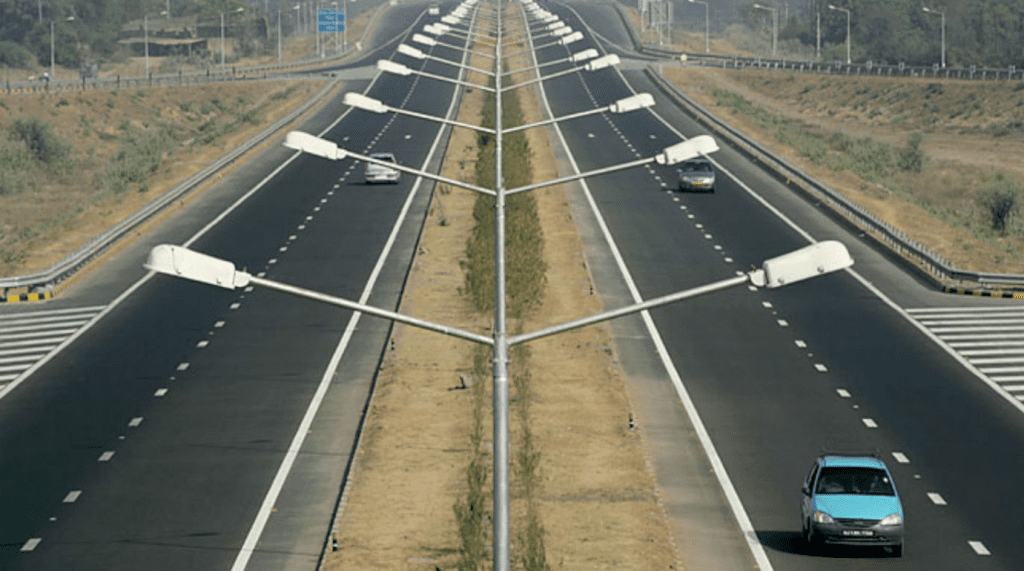
Using BookCheap to make a cab reservation is the most effective method to travel from Patna to Rajgir. BookCheap offers a large selection of taxis, and you can narrow down your search by factors like price, distance, and more.
When you’ve located the ideal taxi for your trip, all you need to do is enjoy your trip to your locations, and BookCheap will give you an estimate.
What are you still holding out for? Order a taxi from Patna to Rajgir right away!
What are the different routes from Patna to Rajgir?

There are a few different routes that you can take when traveling from Patna to Rajgir.
If you’re looking for a scenic route, The first route is 94.3 km and takes 2 h 42 min. Goes via Sonaru, Daniawan, Nagarnausa, Nur Sarai, Kamarpur, Nalanda, Dariyapur and finally Rajgir. and you’ll get to see some beautiful countryside.
The second route takes 2 h 57 min to cover 107 km. It goes via Sonaru, Daniawan, Hilsa, Ekangarsarai, Islampur, Parsarai, Kochara, Pilkhi and finally Rajgir. It takes more time and distance compared to the first route.
Places to Visit
1. Hot Springs
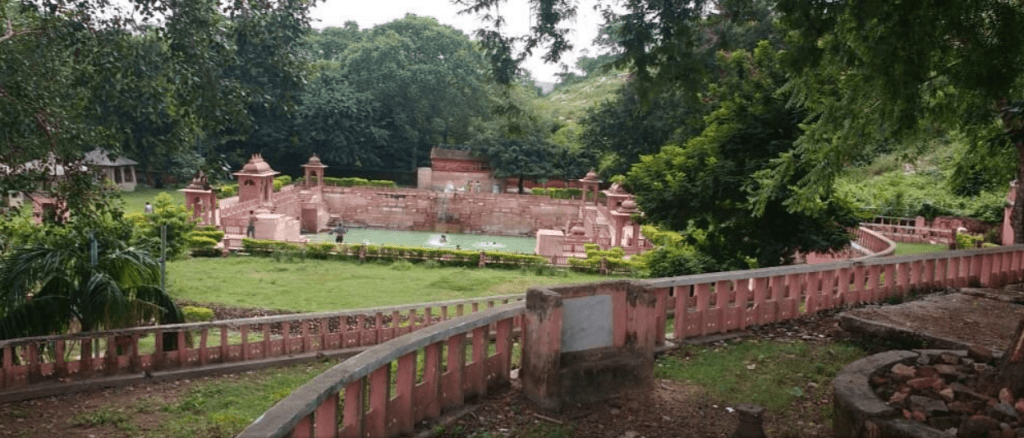
There are vast amounts of slippery and chemical compounds at Rajgir’s punch bottom of the hill. Buddhist legend claims that there was a monastery called Tapodarama during the time of the Buddha. Lord Buddha bathed there to prevent back discomfort. These mountains’ structure allows for a sluggish infiltration of rainwater into the foothills.
Because the water used to create the waterfall was heated by minerals like sulfur, it is extremely hot. The temperature of the waterfall is constant. Some of the advantages of many illnesses come from bathing.
Additionally, this reservoir draws visitors and pilgrims. Makhdoom Kund, Surya Kund, Sita Kund, Gauri Kund, etc. are accessible from the profusion of vegetation at the mountain’s slopes, Bramha Kund, Sapt dhara, Ganga, Jamuna Kund, etc. may be found on the profolious slopes of the Vaibhargiri mountain.
2. Shanti Stupa

The Vishwa Shanti Stupa is another name for Shanti Stupa. It is a significant Buddhist pilgrimage site. There are superbly detailed sculptures of the Lord Buddha inside the marble towering stupa. It is mostly recognized as a spiritual and photographic attraction.
The head of the Buddhist Association, Guruji Bichchu Nichi datsu fujt, has plans to build a World peace stupa atop Ratnagiri mountain. The stupa’s height is 120 feet, and its diameter is 103 feet; it was built in 1965. There are four really stunning statues positioned all around the stupa.
3. Griddhakuta or Vulture’s Peak

The Lord Buddha established his second wheel of law here and gave his followers numerous motivational discourses for three months each year during the rainy season. In remembrance, the Buddha Sangha of Japan built the Shanti Stupa (Peace Pagoda), a sizable contemporary stupa, on top of the hill.
The hill may be reached through a bridle route, but riding the Aerial Chairlift, which runs every day save Thursday, is far more enjoyable. A one-way trip takes 7.5 minutes, and the ride offers a beautiful view of Rajgir’s hills.
4. Ropeway Rajgir
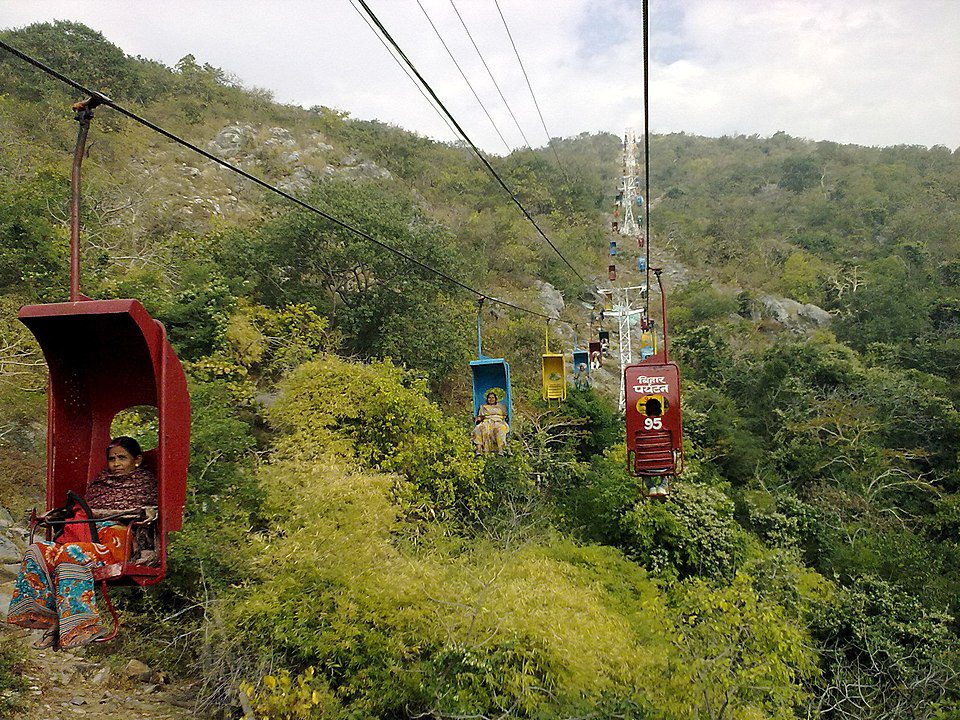
In 1969, with the assistance of the Japanese government, Akashiya Rajju Marg was constructed as a route to Shanti Stupa. The distance to Shanti Stupa, which is about 2200 feet tall, is approximately 7 minutes from Akashiya Rajju Marg. It joins three mountains together.
5. Ajatshatru Fort
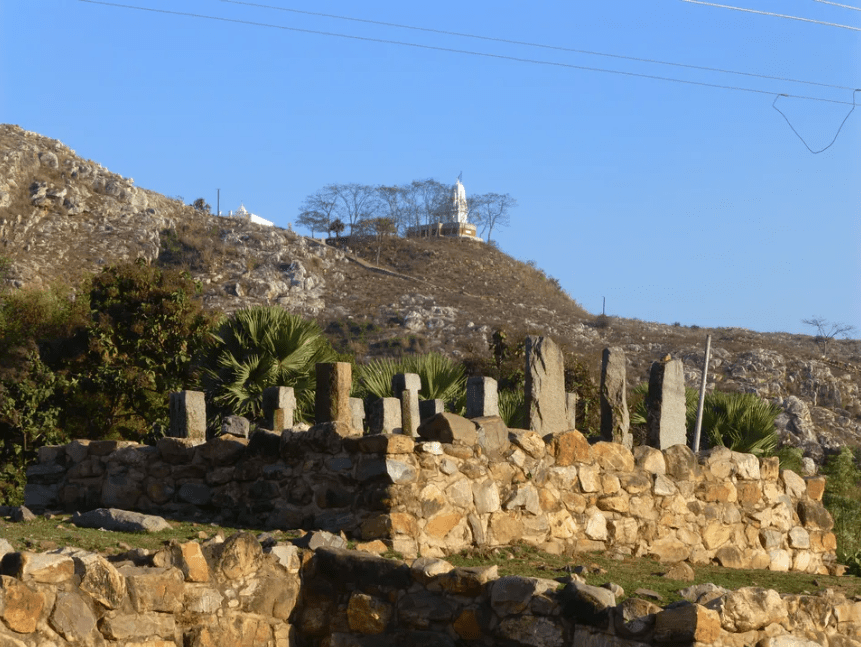
Thousands of years ago, the Ajatshatru Fort was a marvel. According to popular belief, it was constructed during the Buddha’s lifetime in memory of its namesake, Emperor Ajatshatru. It is a favorite among academics and history buffs. It’s also the perfect spot for photographers to see some remarkably well-preserved historical architecture.
6. Bimbisara’s Jail

Buddhist history claims that after becoming king, his eager son and successor Ajatashatru imprisoned his father King Bimbisara here. The prisoner king chooses this location because he could observe Lord Buddha ascending to his mountain refuge atop the Griddhakuta peak from here. You may see the Japanese Pagoda clearly. The peace stupa was erected on top of the hill.
7. The Cyclopean Wall

It formerly ringed historic Rajgir along a 40 km stretch. The wall is one of the few notable pre-Mauryan stone structures that have ever been found. Large bare stones were skillfully assembled to form the structure. There are still remnants of the wall, especially where Rajgir exits towards Gaya.
8. Jarasandha ka Akhara

The capital of the magnificent and majestic monarch of Magadh, Jarasandha, was Grivarj, now called Rajgir. According to the Mahabharata, this is the scene of the battle between Bhima and Jarasandha, in which Bhima successfully killed Jarasandha by tearing apart Jarasandha’s body into two pieces and throwing them in different directions to prevent it from coming back together.
Transportation
Air: The closest airport is Gaya International Airport in Gaya, which is 78 km away and is connected to destinations outside including Bangkok, Columbo, etc. Patna, 101 km away, has another airport. The airlines Air India, Indigo, Jet Airways, and Go Air connect Patna to Kolkata, Bengaluru, Mumbai, Delhi, Ranchi, and Lucknow.
Rail: Gaya Junction railway station is 78 km away from Rajgir railway station, the closest accessible railhead, which connects the city to other regions of the country. The Bakhtiarpur-Gaya line improves train accessibility to a number of locations. It is one of the stops on the illustrious Mahaparinirvan Express, a train that travels on a Buddhist pilgrimage, operated by the Indian Railway.
Road: Rajgir is 110 kilometers from Patna, 12 km from Nalanda, 78 km from Gaya, 19 km from Pawapuri, 25 km from Bihar Sharif, etc. NH 120 passes through Rajgir and links it to Patna, Bodhgaya, Gaya, Nalanda, and Bihar Sharif. State Highway 71 also connects Rajgir to Giriyak, Islampur, and Jahanabad.
Conclusion
Rajgir is a place where the spirituality and rich colors of history with ties to both Jainism and Buddhism permeate the air that surrounds its stunning landscapes.
Rajgir, a spiritual village with natural tranquility among the lush forests, intriguing caves, and springs, is located in a verdant valley and bordered by rugged hills. It is home to a large number of religious sites, most of which are focused on Buddhism or Jainism. Given that both Lord Buddha and Lord Mahavir are claimed to have visited this location, it has significant spiritual and religious significance. Here, one may explore several ruins, temples, and places in addition to taking in some of the area’s calming tranquility.
Book Now at 9263774117
